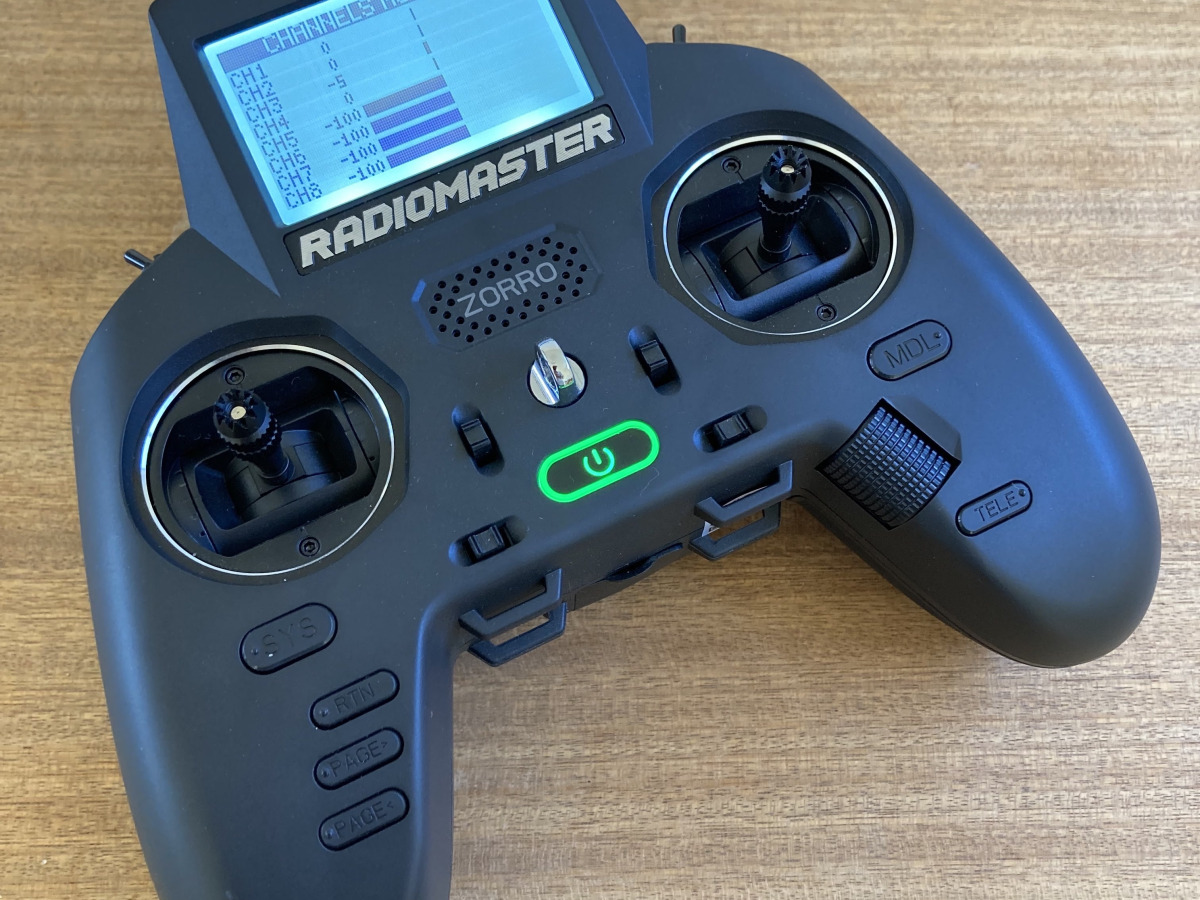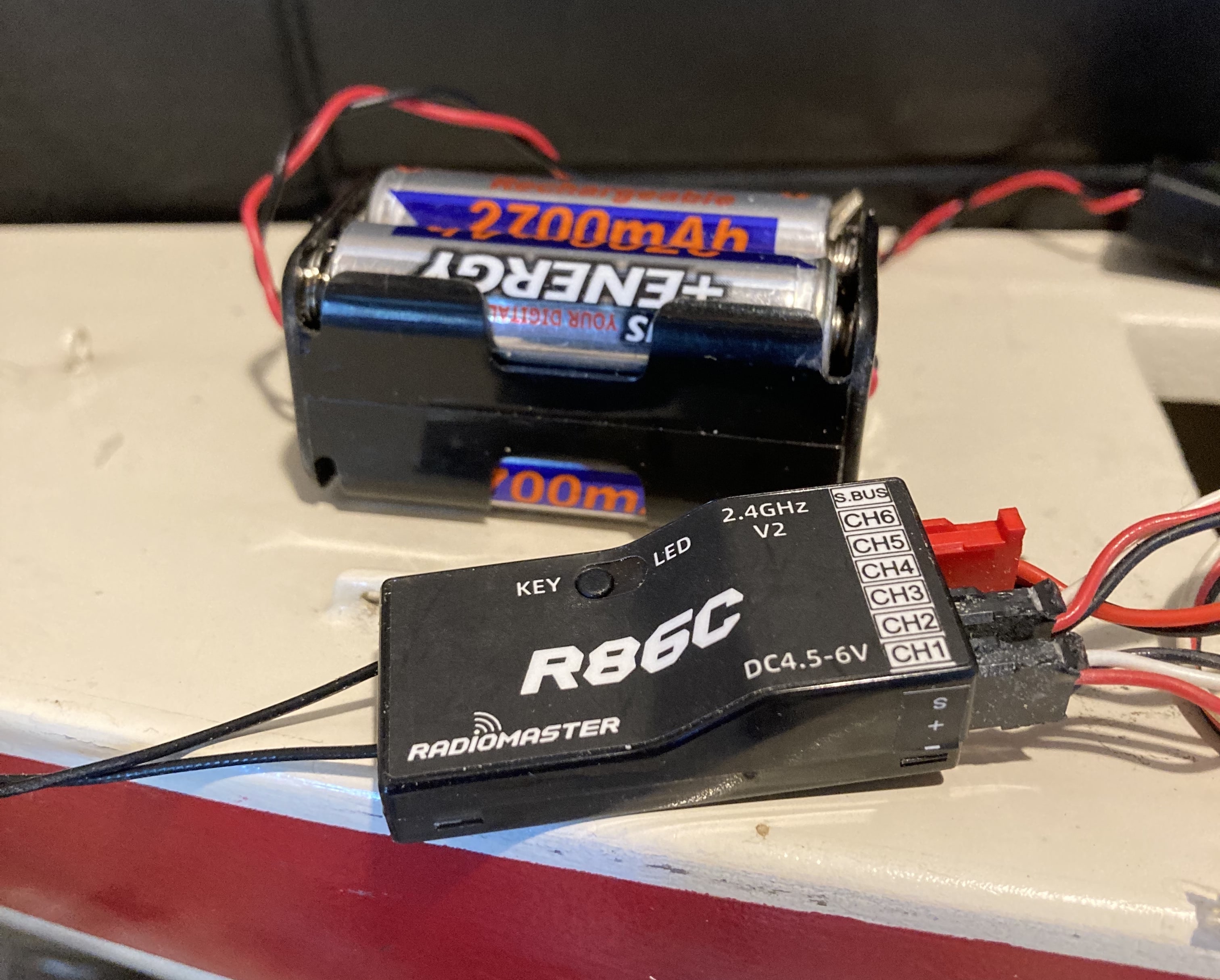Entwicklung der Funkgeräte
Die Welt der Fernsteuerungstechnologie (RC) hat seit den frühen Tagen der 27 MHz Frequenzen einen langen Weg zurückgelegt. Während das 27 MHz Frequenzband einst ein fester Bestandteil des RC-Hobbys war, wurde es mittlerweile weitgehend durch fortschrittlichere und effizientere Frequenzen ersetzt. In diesem Blogbeitrag werfen wir einen Blick auf das 27 MHz Frequenzband und vergleichen es mit den modernen Frequenzen, die an seine Stelle getreten sind.
Die neuen Frequenzen, die in der modernen RC-Technologie verwendet werden, gelten aus mehreren Gründen als besser. Diese neuen Frequenzen haben oft eine breitere Bandbreite, was bedeutet, dass sie mehr Daten in kürzerer Zeit übertragen können. Dies führt zu einer reaktionsschnelleren und flüssigeren Steuerung des RC-Modells. Darüber hinaus haben diese Frequenzen auch tendenziell weniger Interferenzen von anderen elektronischen Geräten, was zu einer stabileren und zuverlässigeren Verbindung führt.
Insgesamt haben die Verbesserungen in der Frequenztechnologie die Entwicklung fortschrittlicherer und ausgeklügelterer RC-Modelle ermöglicht, die ein besseres Benutzererlebnis bieten.
Das Titelbild zeigt den neuesten Funksender von Radiomaster, genannt 'Zorro'. Er kostet etwa 240 NZD. Ich habe das 4-in-1-Modell gekauft, um es mit einem alten Racing Sparrow-Modell und 2 alten Futaba S3003 Servos zu verwenden. Ein neuer Empfänger war ebenfalls erforderlich, um ein altes Boot mit der neuesten Technik aufzurüsten.

Servos und Batterien
Es ist wichtig zu beachten, dass sich die Empfängertechnologie zwar weiterentwickelt hat, die Servos und Stecker, die in RC-Modellen verwendet werden, jedoch weitgehend gleich geblieben sind. Das bedeutet, dass Sie, wenn Sie ein älteres 27 MHz RC-Modell besitzen, es oft auf eine moderne Frequenz umstellen können, indem Sie einfach den Empfänger ersetzen. Die Batterie, Servos und Stecker funktionieren mit dem neuen Empfänger, sodass es nicht notwendig ist, neue Servos zu kaufen oder die vorhandene Verkabelung zu ändern. Sie benötigen auch keine LiPo-Batterien oder Spannungsregler, das ist ein ganz anderer Blogbeitrag. 4 AA-Batterien tun immer noch ihren Dienst!

Ein 4,8V Batteriepacks und ein moderner 2022 Radiomaster 2,4 GHz Empfänger. Die Antennen sind 10 cm lang x 2. Sie können einfach im Inneren eines Modellbootes sitzen, es ist nicht nötig, sie bis zum Mast zu führen.
Das 27 MHz Frequenzband wurde in den 1970er Jahren erstmals als Frequenz für RC-Modelle eingeführt. Zu dieser Zeit galt es als ein großer Durchbruch in der RC-Technologie, da es die Schaffung kleiner, energiearmer RC-Modelle ermöglichte, die sowohl erschwinglich als auch einfach zu bedienen waren. Das 27 MHz Frequenzband wurde schnell von der RC-Hobby-Community übernommen und wurde über viele Jahre hinweg zu einem Grundpfeiler der RC-Industrie.
Mit dem fortschreitenden technologischen Fortschritt wurde jedoch klar, dass das 27 MHz Frequenzband seine Grenzen hatte. Eines der Hauptprobleme mit dem 27 MHz Frequenzband war, dass es eine gemeinsame Frequenz war, was bedeutete, dass mehrere RC-Modelle zur gleichen Zeit auf derselben Frequenz betrieben werden konnten. Dies führte oft zu Interferenzen und verringerter Leistung, da die Modelle um die Bandbreite auf derselben Frequenz konkurrierten.
Um diese Einschränkungen zu beheben, wurden moderne Frequenzen eingeführt. Eine der beliebtesten dieser Frequenzen ist das 2,4 GHz Frequenzband. Dieses Frequenzband ist viel breiter als das 27 MHz Frequenzband, was es ermöglicht, dass mehr Geräte auf derselben Frequenz betrieben werden, ohne sich gegenseitig zu stören. Darüber hinaus ist das 2,4 GHz Frequenzband auch viel weniger überfüllt als das 27 MHz Frequenzband, was bedeutet, dass RC-Modelle mit höheren Geschwindigkeiten und größerer Präzision betrieben werden können als auf dem 27 MHz Frequenzband.
Ein weiterer Vorteil des 2,4 GHz Frequenzbands ist, dass es eine Technologie namens Direct Sequence Spread Spectrum (DSSS) verwendet. Diese Technologie ermöglicht die Schaffung einer einzigartigen, verschlüsselten Verbindung zwischen dem RC-Modell und dem Controller, wodurch das Risiko von Interferenzen durch andere RC-Modelle eliminiert wird. Dies ist eine erhebliche Verbesserung gegenüber dem 27 MHz Frequenzband, bei dem Interferenzen von anderen Modellen ein häufiges Problem darstellten.
Neben dem 2,4 GHz Frequenzband wurden auch andere Frequenzen als Alternativen zum 27 MHz Frequenzband eingeführt. Eine dieser Frequenzen ist das 5,8 GHz Frequenzband, das häufig für hochwertige RC-Modelle und Renn-Drohnen verwendet wird. Das 5,8 GHz Frequenzband ist sogar breiter als das 2,4 GHz Frequenzband, was noch größere Geschwindigkeiten und Präzision ermöglicht. Es ist jedoch auch überfüllter als das 2,4 GHz Frequenzband, sodass es wichtig ist, mögliche Interferenzen beim Betrieb von RC-Modellen auf dieser Frequenz zu berücksichtigen.

Der zuverlässige alte Futaba S3003, heute noch für etwa 10 NZD erhältlich, alles, was man wirklich braucht! Dies ist mein persönliches Exemplar, ziemlich alt und verlassen aussehend, aber es funktioniert immer noch einwandfrei.
Eine weitere Frequenz, die als Alternative zum 27 MHz Frequenzband eingeführt wurde, ist das 900 MHz Frequenzband. Dieses Frequenzband ist in der Breite ähnlich dem 2,4 GHz Frequenzband, arbeitet jedoch bei einer niedrigeren Frequenz, was es ihm ermöglicht, Hindernisse effektiver zu durchdringen. Dies macht es zu einer idealen Frequenz für RC-Modelle im Freien, wie Boote und Flugzeuge.
Ein Hauptvorteil der modernen Frequenzen ist, dass sie eine viel größere Reichweite und Zuverlässigkeit bieten als das 27 MHz Frequenzband. Dies liegt daran, dass die breiteren Frequenzbänder mehr Daten übertragen können und die DSSS-Technologie das Risiko von Interferenzen durch andere RC-Modelle eliminiert. Dies führt zu einem viel reibungsloseren und angenehmeren Erlebnis für den Benutzer, da das RC-Modell aus einer viel größeren Entfernung mit größerer Präzision betrieben werden kann.
Ein weiterer Vorteil der modernen Frequenzen ist, dass sie viel sicherer sind als das 27 MHz Frequenzband. Dies liegt an der einzigartigen, verschlüsselten Verbindung, die zwischen dem RC-Modell und dem Controller hergestellt wird.
Zusammenfassend lässt sich sagen, dass das 27 MHz Frequenzband einst ein Grundpfeiler des RC-Hobbys war, mittlerweile jedoch durch fortschrittlichere und effizientere Frequenzen ersetzt wurde. Moderne Frequenzen wie 2,4 GHz, 5,8 GHz und 900 MHz bieten eine größere Reichweite, Zuverlässigkeit und Sicherheit als das 27 MHz Frequenzband und sind heute der Standard in der RC-Industrie. Während sich die Empfängertechnologie weiterentwickelt hat, sind die Servos und Stecker, die in RC-Modellen verwendet werden, weitgehend gleich geblieben, sodass das Upgrade eines älteren RC-Modells auf eine moderne Frequenz oft so einfach ist wie der Austausch des Empfängers.